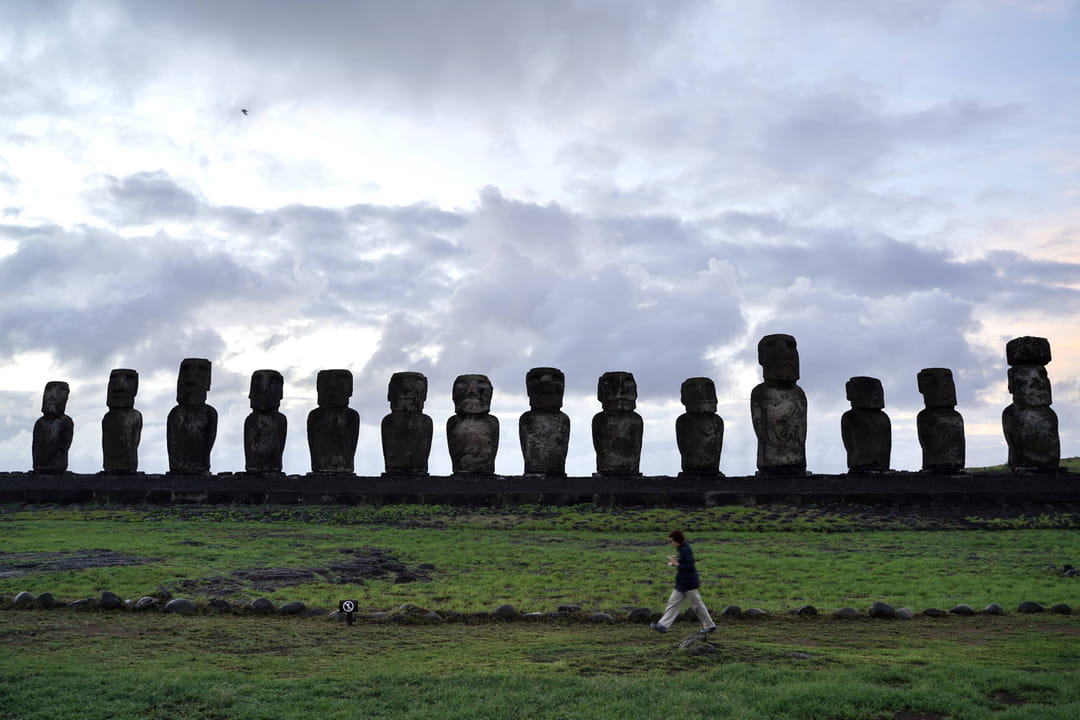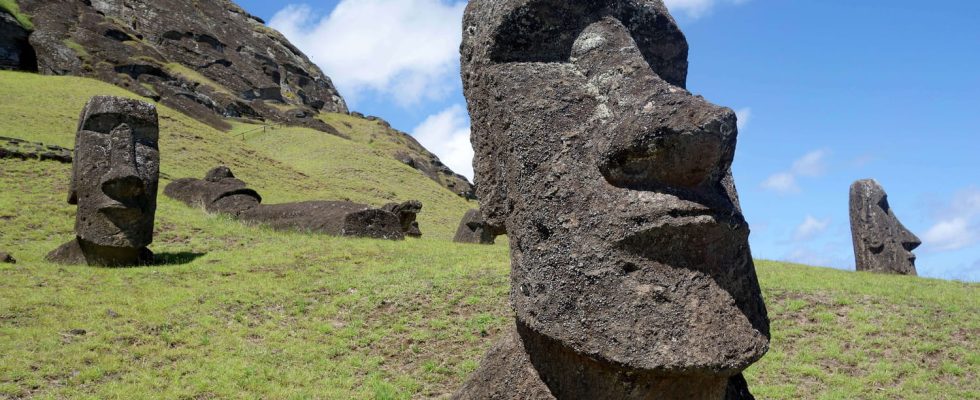Easter Island is known for its monumental statues. That being said, she would be hiding a whole other secret that could shake up History.
The Moaï are the very famous monumental statues, between 2.5 and 9 meters, from Easter Island in Eastern Polynesia. They are dated from the 13th and 15th centuries. They are sculpted from rock mainly from the Rano Raraku volcano. A true tourist attraction of the island, the Moaï have been a UNESCO world heritage site since 1995.
The reason for their construction, however, remains a mystery. In the magazine Journal of Archaeological Science, a recent study explained that the mining of rock and the construction of giants were intended to promote soil fertility and agriculture. The soil would have become rich through the extraction of local rock. “In the quarry, the constant flow of small rock fragments generated by the mining process allowed a perfect return system of water, natural fertilizers and nutrients,” said Sarah Sherwood, co-author of the ‘study. The Moai would then have been used to protect crops: “The Moai were central to the idea of fertility and, in Rapanui belief, their presence here stimulated agricultural food production,” said Jo Anne Van Tilburg, director of Easter Island. Statue Project, as reported Geo.
Easter Island has not yet revealed all its secrets. It would be particularly linked to the invention of writing. It is established that writing originated in Mesopotamia in 3300 BC. However, since the 1970s, other discoveries have suggested that humans had invented writing independently of it in other places, notably in Egypt and China. A recent study by researchers at the University of Bologna in Italy published in Nature would add Easter Island to the list. To reach this conclusion, specialists dated the wood of ancient tablets found on the island. They represent human figures, tools, plants, animals or even celestial bodies. Several elements such as linear sequences or corrections are reminiscent of a form of written language. The deciphering of the symbols still remains under study.

However, scientists used radiocarbon dating to find out how old these tablets were. For the wood of one of the four tablets found, the technique gave a fairly old date: 1450. However, Europeans only arrived on the island in 1720. This could then mean that the inhabitants had created their writing themselves, regardless of the influence of the cultures that were already writing. Unfortunately, it is difficult to confirm this deduction because the dating is actually that of the wood and not of the writing itself.
If the Rongorongo script, as it was named, was indeed created before the arrival of Europeans, it would be the fifth time in history that humans have developed an independent writing system. A really interesting revelation since only 50 years ago, experts believed that humans only invented writing in Mesopotamia.
